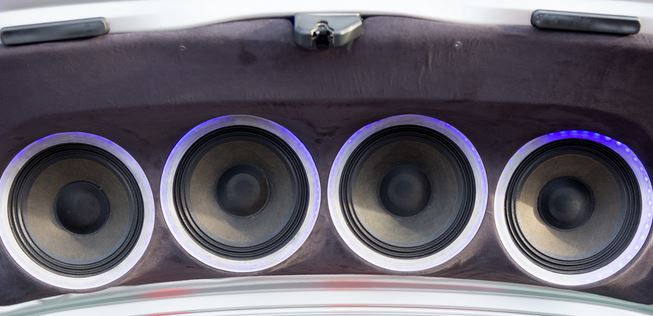A car subwoofer is one of the best and most powerful audio enhancement equipment that you can incorporate into your vehicle’s sound system. Subwoofers can also be found incorporated in home sound systems to improve the sound quality of the music. The main purpose of this electrical device is to improve the sound quality of your car’s stereo system by adding deep bass and very clear sound.
Most vehicles come equipped with just a basic audio system that does not include a subwoofer and thus they are not able to reproduce bass frequencies to add bass and add to the listening experience. Cars, in general, come with small speakers that have the capacity to reproduce frequencies that are as low as 40 Hertz. This will occur when the decibels are above the 100 decibel mark.
However, when you add a state of the art car subwoofer in your car, it will improve the capability to reproduce bass frequencies and you’ll be able to enjoy bass tones that range between 20 and 200 HZ. This is a very high level where the vibrations will match the tone.
Subwoofers first came into limelight back in the 1970s. This was the time subwoofers were invented and started to be used in recording studios to improve musical recordings. Car subwoofers are usually embedded with drivers that measure anywhere between 8 to 34 inches. The ones you will find at live events such as concerts and theaters fall in between fifteen and eighteen inches. Subwoofers can make the overall sound interesting because they produce vibrations along with the sound.
If you desire to improve the sound quality of your car’s audio system, then you will need to buy the car subwoofer from the aftermarket. These powerful devices are usually installed in the back of the car in the boot. This enables it to produce better sound quality and bass.
Installing car subwoofers in your vehicle will require a little bit of technical expertise. The service is usually provided in car repair centers and at the dealership. In order to ensure the right installation of your car subwoofer, you should buy a subwoofer enclosure as well. The installation process starts with removing the carpet from your car’s boot and then cleaning out the area. Then a sound deadening material such as Accumat or Dynamat is applied to the trunk floor to absorb the vibrations and reduce noise. After this, you’ll need to use a roller to bond the surfaces together before replacing the carpet. Next, you will need to install the subwoofer enclosure into the car.
It’s important to know that your car subwoofer should be fitted along with an amplifier, even though this depends on the type of the subwoofer as others come with built-in amplifiers. The amplifier usually comes along with an instructional manual to enable easy installation. Then, you’ll need to wire and connect the car subwoofers to the rare speakers.
It’s recommended that you avoid fixing your subwoofers permanently in the beginning. This will enable you to first experiment with the subwoofer’s positioning in order to be able to get the best-balanced sound.
It’s important to note that the model, size, make, and compatibility of car subwoofers vary. Hence, you will need to be very careful when it comes to choosing the right speaker for your car audio system.
If you want your subwoofer to stand the test of time, then it is important to ensure that that you’re not overloading it. If the amp, for instance, has a greater RMS wattage than your car’s subwoofer, you can easily overload and break the subwoofer, so you need to keep an eye on the level of volume you subject to your sub.Another thing that can be as dangerous to your sub is not having enough power to supply your subwoofer, as it will start producing ‘clipping’ sound. When clipping sound occurs, the sound waves cannot reach the full volume that your speakers are capable of as the amplifier is working at maximum power. This can easily overheat and damage the speakers, which means that your car audio system may seriously decrease in quality.
The best thing is to keep the RMS wattage of your car subwoofer and the RMS wattage of your amp as close as possible. This will minimize the possibility of damaging your sub and also ensures that you make the most out of your sub.
